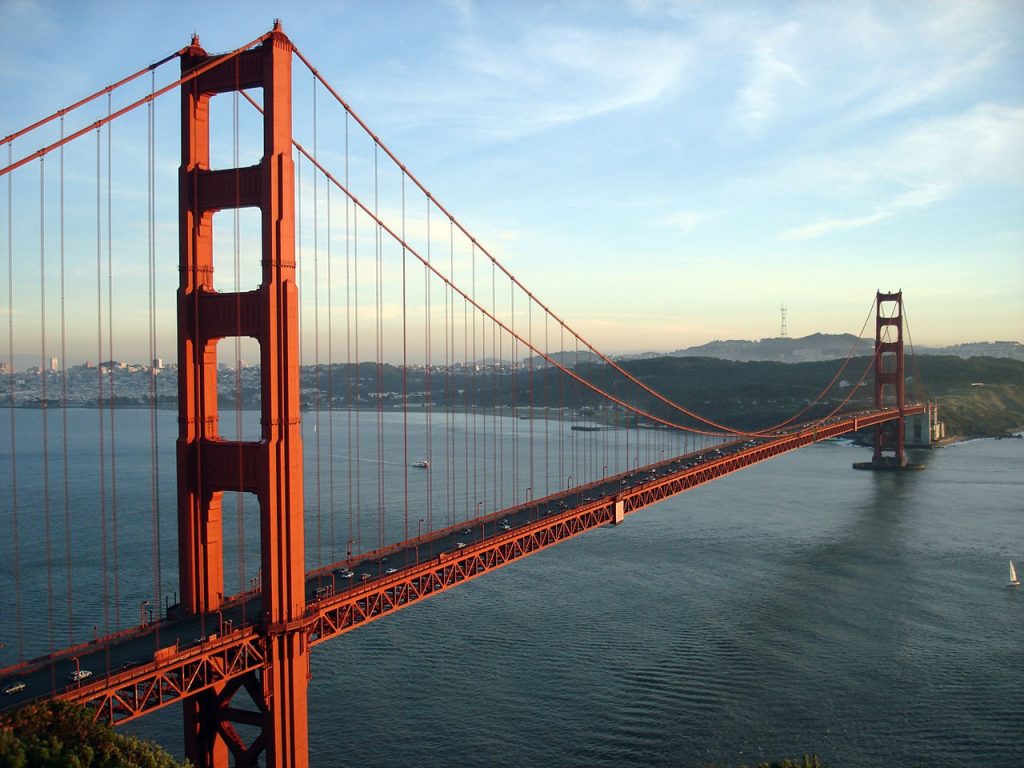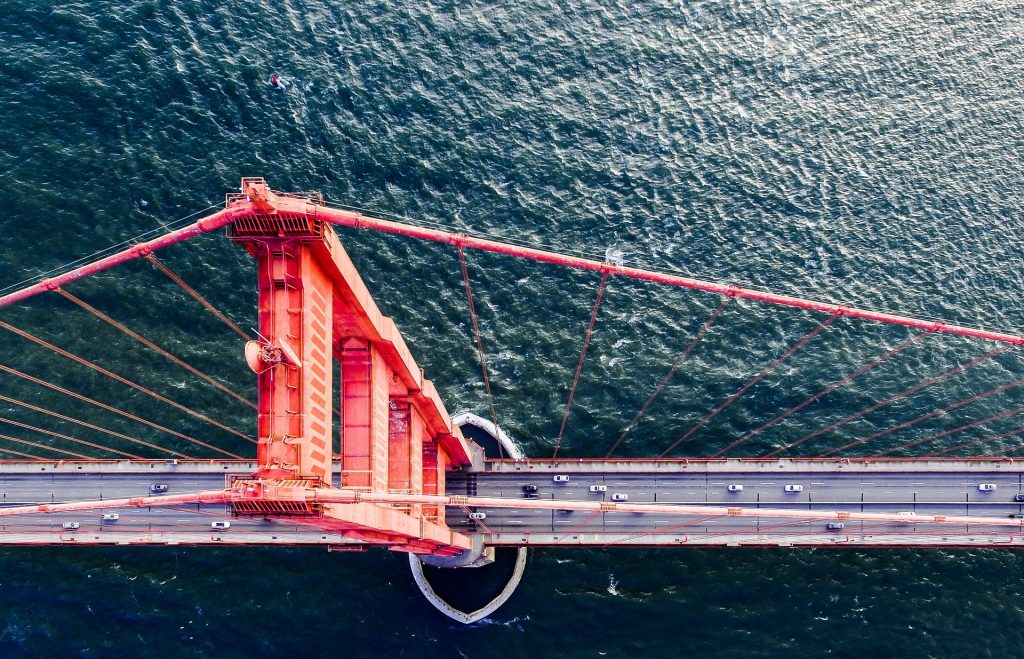InTrans / Jul 11, 2017
Transportation Feats of the World: Journey across the Golden Gate
Go! Magazine
 posted on July 11, 2017
posted on July 11, 2017
There’s nothing quite like the Golden Gate Bridge. Located in San Francisco, California, it’s considered one of America’s most famous landmarks. Stretching an impressive 1.7 mi., this bridge has endured the test of time and holds steadfast as “a marvel of modern engineering.”
But the Golden Gate isn’t just on our list. In 1994 it was named one of the “Seven Civil Engineering Wonders of the United States” by the American Society of Civil Engineers. Supporters of the bridge had to fight long and hard to see the construction of the bridge through, but those who enjoy the Golden Gate today would probably agree it was well worth the fight.
History of the Golden Gate
It all started with a dream: to connect the city of San Francisco to its neighbors across the Golden Gate Strait. For decades, public calls had urged the city to connect the mile-wide gap, and, in 1919, city engineer Michael O’Shaughnessy was tasked to find someone who would construct a bridge within a reasonable budget. They chose Chicago-based engineer and bridge builder Joseph Strauss. Strauss believed he could complete the project for $25 to $30 million.

The project gained momentum in 1923 when the California state legislature passed a plan to design and finance construction of the bridge. Construction began on January 5, 1933, and included a construction crew of out-of-work cab drivers, farmers, clerks, and basically anyone else capable of withstanding the physical labors of the job. Hopeful workers lined up at the chance to earn steady, government wages as ironworkers and cement mixers.
The bridge towers were completed in June 1935, and the roadway was completed shortly after in April 1937. The bridge officially opened to pedestrians the following month on May 27, 1937, and some 200,000 people came out to celebrate the milestone. The next day, President Theodore Roosevelt announced via White House telegraph that the bridge was officially open for cars and anyone else who wanted to see the engineering marvel. Its 746 ft. towers made it the tallest bridge of any kind until 1933.
The bridge was named after the Golden Gate strait, where the San Francisco Bay extends into the Pacific Ocean. It spans the body of water connecting San Francisco to Marin County, California, on the other end of the bridge. Before the bridge was completed, the only transportation possible across the strait was a ferry boat, much like the situation we saw with the Akashi Strait and the Akashi Kaikyo Bridge in Japan. Although the Akashi Kaikyo is the longest suspension bridge in the world today, the Golden Gate Bridge held the record until 1964.
Feat of engineering
So, what type of planning had to go into engineering the Golden Gate Bridge?
Strauss originally submitted a cantilever-suspension hybrid bridge design in June 1921, but another crew member would go on to propose a suspension bridge design that would scrap the hybrid design altogether. This new design was favorable, as it would be capable of moving more than 2 ft. in order to withstand strong winds. Fellow crew member and architect Irving Morrow conceptualized the towers, and primary structural designer Charles Ellis worked out the complex engineering equations.

Strauss and his fellow collaborators faced opposition from city officials, environmentalists, and ferry operators. City officials were skeptical of the cost, and ferry operators had concerns that the bridge would impact their business. Some members of the engineering community even went as far as saying it was “technically impossible to build the bridge.” They also faced difficulties funding the project since the beginning, largely due to the Great Depression, which lasted almost the entire 1930s.
Testing the waters
This was the first time a bridge like this was built, so how did the engineers and crew members cope when “testing the waters”?
Building the bridge supports in the ocean proved to be an immense challenge for the crew. Divers had to plunge 90 ft. into the water in order to remove rock and detonation debris and clear the way for the supports. Once the towers were erected in 1935, a New Jersey based company handled on-site construction of the suspension cables. The company had mastered their technique and completed the suspension cables in just over six months.
The crew also faced ongoing challenges and hazardous conditions during the entire construction process. Workers dealt with strong ocean currents and heavy wind and fog, all while trying to keep their balance! There was a net positioned to catch workers from falling into the strait, and it saved 19 workers. Survivors are said to be members of the “Halfway to Hell Club.” Total, there were only 11 construction fatalities, which is considered to be an impressive safety record.

Their hard work and dedication did not go unnoticed. The Golden Gate Bridge survived the Loma Pieta earthquake in 1989 and was only closed three times in 75 years due to weather conditions. Its “international orange” color is meant to help with visibility, providing extra reflectivity to passing ships through San Francisco’s “famous fog.”
Journey across the Golden Gate
Have you ever seen the Golden Gate Bridge? Have you been one of the many people to photograph what is believed to be the “most photographed bridge” in the world? Go see the Golden Gate today to witness living American history!
References
www.history.com/topics/golden-gate-bridge
goldengatebridge.org/research/ConstructionPrimeContr.php
goldengate.org/exhibits/exhibitarea4a.php
Related links
(Video) Golden Gate Bridge construction stock footage: www.youtube.com/watch?v=QxO1KvB4W10
(Video) www.history.com/topics/san-francisco/videos/deconstructing-history-golden-gate-bridge
How engineers would build the Golden Gate Bridge today: www.businessinsider.com/how-engineers-would-build-the-golden-gate-bridge-today-2017-6
By Hannah Postlethwait, Go! Staff Writer